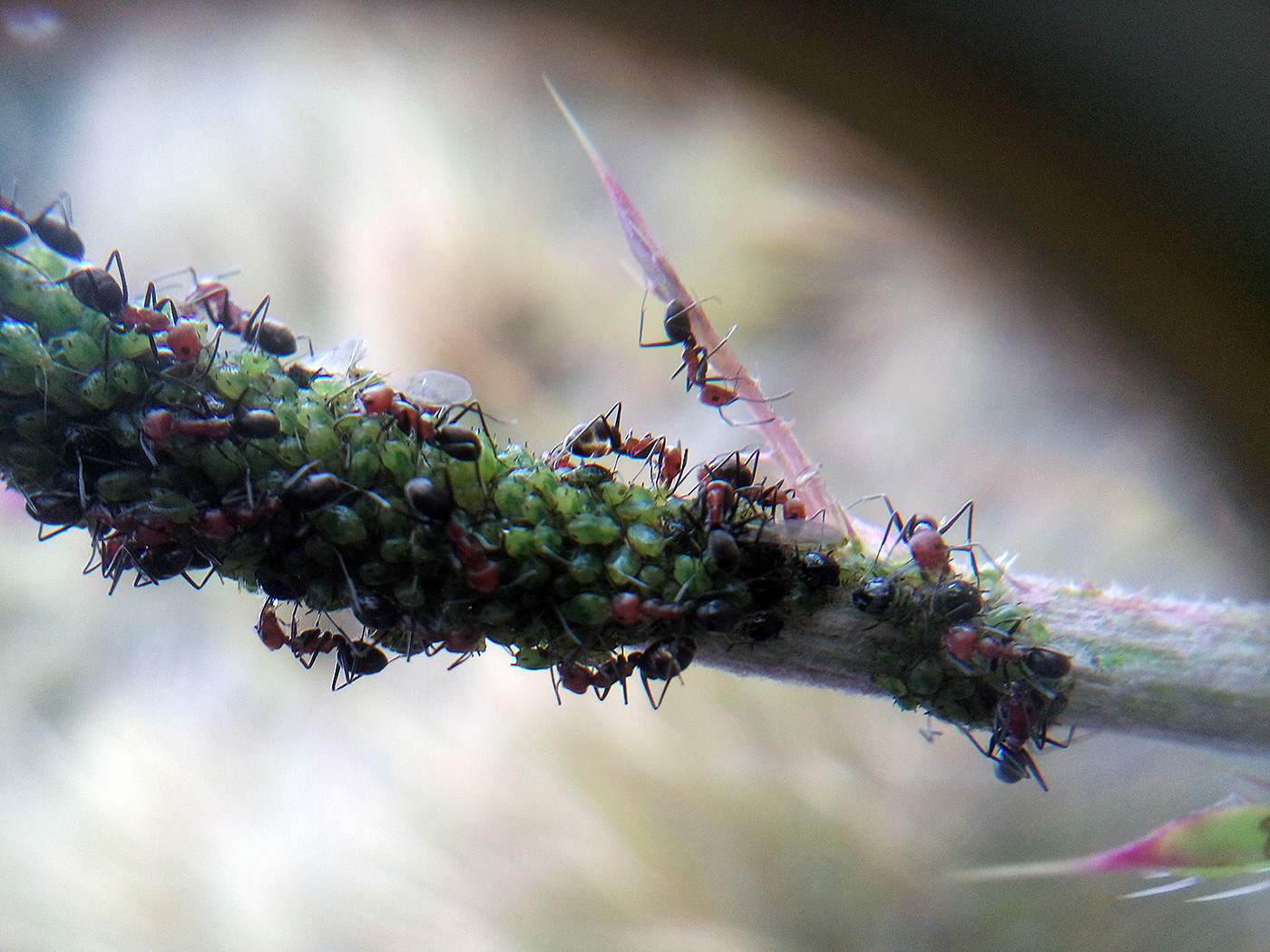One type of biotic interaction common in nature is the mutualism between plants and ants. While the latter obtain benefits such as nesting sites, nutritional bodies and nectar, plants are favored in important processes such as pollination, seed dispersion and defense against herbivores. The efficiency of ants in their defensive role can depend on factors such as identity, richness, abundance and species turnover and, consequently, these variables can be key in the fitness of their hosts. In addition, some ants are associated with plants through aphids, that have a deleterious effect on plants. Thus, the fitness of a plant that harbors both ants and aphids will be determined by the balance between the positive anti-herbivore defense of the ants and the negative effect of the aphids. In the Patagonian steppe, Carduus thoermeri is an exotic plant that host aphids (Brachycaudus cardui, Uroleucon aeneum and Aphis fabae) and melivorous ants (Dorymyrmex tener, Camponotus sp. and Dorymyrmex richteri). In this project I will test whether the ant identity, abundance and turnover affect the fitness and population dynamic of thistles.
GOOD OR BAD GUESTS? ROLE OF MELIVOROUS ANTS AND APHIDS ON THE FITNESS OF THISTLES

